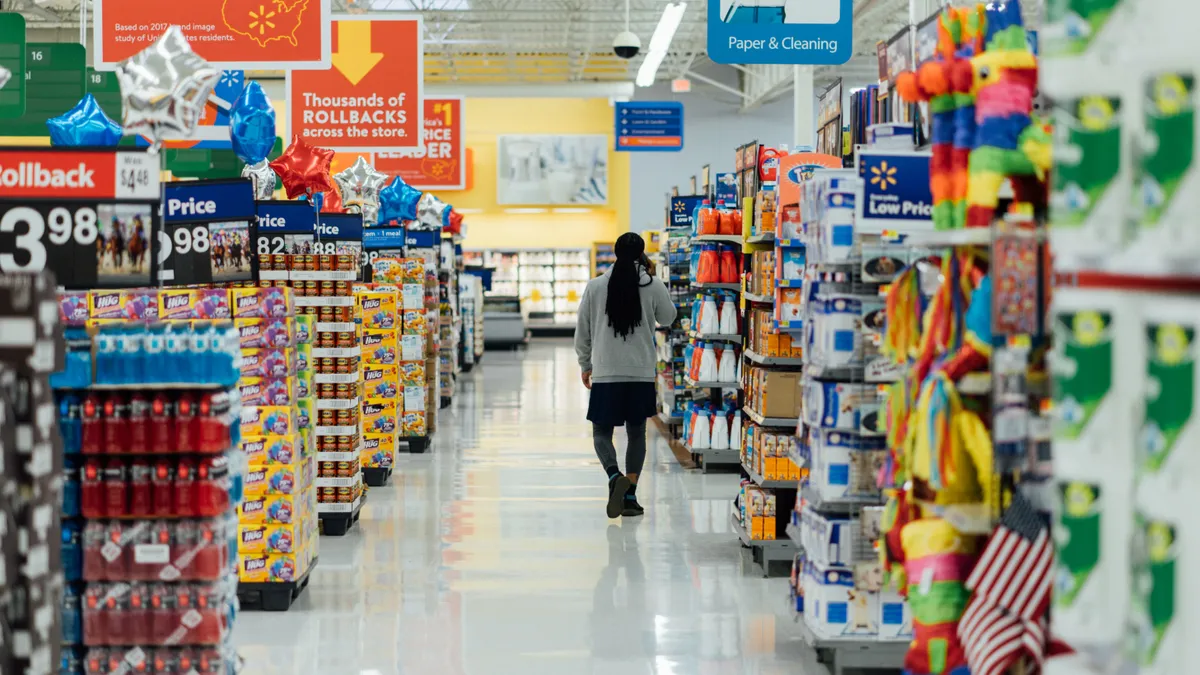At the height of the pandemic, social distancing and stay-at-home orders forced many consumers to try out digital shopping options like grocery pickup and grocery delivery. While digital shopping is certainly here to stay, many consumers are beginning to venture back into stores. Forbes reports that foot traffic and in-store visits to retail, restaurant and entertainment locations have increased 44% since the start of 2021.
As in-store foot traffic increases, marketers need to reach audiences based on store behaviors. Here are three shopping behaviors to consider when creating your in-store marketing strategy:
Consumers shopping lists aren't branded
When building out their shopping lists, the majority of consumers aren't adding brands to the list. Instead, they’re looking for "lunch meat," "frozen pizza" or "laundry detergent." And, yes, they might have a brand they’re loyal to, but 75% of consumers altered their brand preference over this past year.
To get your product into a shopper's cart, you’ll need to create an “Aha-moment” for purchase inspiration. Inmar found that 80% of consumers are actively looking for deals when shopping in-store. By including on-shelf callouts — like offers, a trending recipe to try, or how your product helps solve a shopper dilemma — you can encourage shoppers to choose your brand.
Shoppers are price sensitive
Consumers are noticing rising prices on groceries and everyday household items, and it’s affecting their purchase decisions. Many (41%) feel that brands and retailers should find solutions to prevent rising prices and choose to shop at different stores or buy different brands to reduce costs.
Luckily, 62% of shoppers have joined story loyalty programs, which play a large role in consumer purchase decisions. Getting a discount, points or another type of credit through a retailer’s loyalty program — after purchasing a certain brand — influences 95% of shoppers' decisions. Marketers can make a bigger impact with their in-store messaging by leaning into their retailer partnerships, to offer exclusive savings for loyalty members.
Recall drives revenue
Not only are shoppers starting their trips without a particular brand in mind, but their in-store experience directly impacts their purchase decisions. A study of over 3,000 shoppers found that 82% of their purchase decisions were made while in a store, 62% made an impulse buy while shopping, and 16% of their unplanned purchases were driven by in-store promotions.
In-store signage might seem “old-school,” but it effectively drives revenue in today’s climate. In a recent consumer survey, Inmar found that 69% of shoppers recall seeing in-store product advertisements. But, more importantly, those impressions led to browsing and buying. Of the shoppers who recalled seeing an in-store advertisement from a brand or retailer, 69% browsed the featured product, and 61% purchased the product.
The takeaway? Shoppers' purchase decisions aren't set in stone when they enter a store.
Purchase decisions are made when the shopper, your product, and your in-store ad are in the right place at the right time. Therefore, reaching shoppers with the right message at the key decision-making point is crucial.










